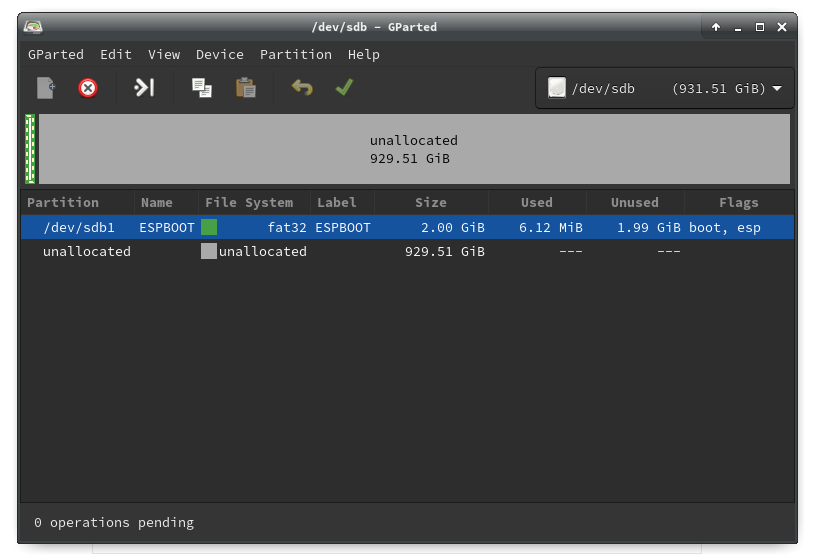

The extended partition is also counted as a primary partition so if the disk has an extended partition, only three additional primary partitions are possible (i.e. A hard disk can contain no more than one extended partition. If the MBR partition table requires more than four partitions, then one of the primary partitions needs to be replaced by an extended partition containing logical partitions within it.Įxtended partitions can be thought of as containers for logical partitions. Primary partitions can be bootable and are limited to four partitions per disk or RAID volume.

In the MBR partition table (also known as DOS or MS-DOS partition table) there are 3 types of partitions:
Arch how to create boot partition code#
The bootstrap code can be backed up, restored from backup or erased using dd. On BIOS systems it usually contains the first stage of the boot loader. The first 440 bytes of MBR are the bootstrap code area.

The boot sector present on a partitionless device or within an individual partition is called a volume boot record (VBR) instead.The MBR is not located in a partition it is located at the first sector of the device (physical offset 0), preceding the first partition.Use a partitioning tool to view the partition table of a block device. A third, less common alternative is using a partitionless disk, which is also discussed. These are described below in the #Master Boot Record (MBR) and #GUID Partition Table (GPT) sections along with a discussion on how to choose between the two. There are two main types of partition table available. 6.2 Drives are not visible when firmware RAID is enabled.6.1 Tricking old BIOS into booting from GPT.1.1.2 Master Boot Record (partition table).1.1.1 Master Boot Record (bootstrap code).disk, partition, LUKS device, LVM logical volume or RAID array) that directly contains a mountable file system is called a volume. Alternatively, partitions can contain LVM, block device encryption or RAID, which ultimately provide device files on which a file system can be placed (or the devices can be stacked further).Īny block device (e.g. Partitions usually contain a file system directly which is accomplished by creating a file system on (a.k.a. The tools available for Arch Linux are listed in the #Partitioning tools section. Partition tables are created and modified using one of many partitioning tools. The partitioning scheme is stored in a partition table such as Master Boot Record (MBR) or GUID Partition Table (GPT). Disk partitioning or disk slicing is the creation of one or more regions on secondary storage, so that each region can be managed separately.Īn entire disk may be allocated to a single partition, or multiple ones for cases such as dual-booting, maintaining a swap partition, or to logically separate data such as audio and video files.



 0 kommentar(er)
0 kommentar(er)
